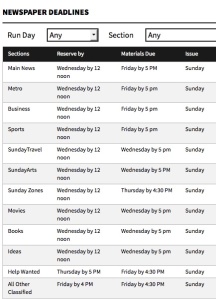Gadzukes, a lot is happening out there. Here, too.
The SaveMyDaily site has been reorganized. With the post count approaching 50, it was time to make the blog easier to read. Please check out the “Pick a Topic” list in the site margin. If your time or interest is limited, click on a subject to see just the pertinent posts. Your humble host hopes the feature will help focus our efforts toward a successful end.
As for doings elsewhere, here are updates to posts previously published.
Fish or Foul? (Newspaper publishers care about what they print — and pay a price for it.): In a Dec. 15, 2017, post on Facebook, Mark Zuckerberg acknowledged that the company’s network is more than an elaborate maze of digital plumbing:
“Facebook is a new kind of platform different from anything before it. I think of Facebook as a technology company, but I recognize we have a greater responsibility than just building technology that information flows through. While we don’t write the news stories you read and share, we also recognize we’re more than just a distributor of news. We’re a new kind of platform for public discourse — and that means we have a new kind of responsibility to enable people to have the most meaningful conversations, and to build a space where people can be informed.
“With any changes we make, we must fight to give all people a voice and resist the path of becoming arbiters of truth ourselves. I believe we can build a more informed community and uphold these principles.” —Mark Zuckerberg
For more on the steps Facebook is taking to do that, take a look at the company’s “News Feed FYI: Addressing Hoaxes and Fake News.”
Making it clear (Better online news design might regain reader trust.): In “So, is it news, opinion or advertising?,” Michelle Morgante, managing editor of The Merced Sun-Star, points out that readers often don’t know the difference between the three. If online news sites do label every piece with a descriptive design element (NEWS, OPINION, etc.), it might be wise to include a link that explains the difference between them — or a link to Morgante’s column.
Discriminating distribution (Should the distribution method dictate the news content?): The Nieman Lab reports that The New Haven Independent, a nonprofit online-only news outlet, has tailored its cop shop policy in recognition of the reach and persistence of internet news. Paul Bass, the paper’s editor and founder is quoted as saying, “With the advent of the Internet, what’s online becomes people’s main or only source of news. People’s reputations are at stake, and often the arrest itself and not the outcome is what is known about them.” (“No mugshot exploitation here: The New Haven Independent aims to respect the reputations of those arrested in the community it covers” —Neiman Lab)


